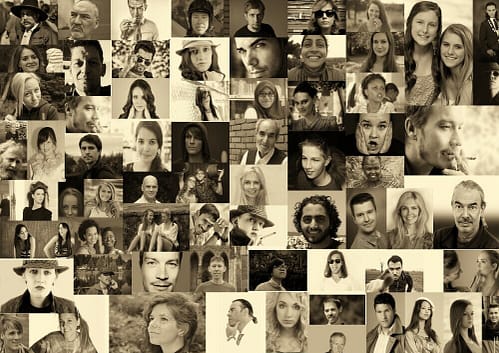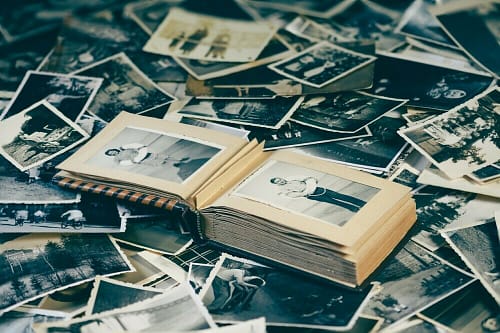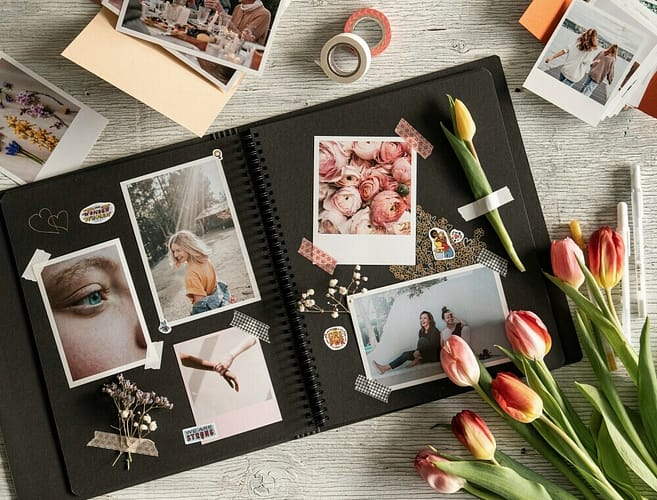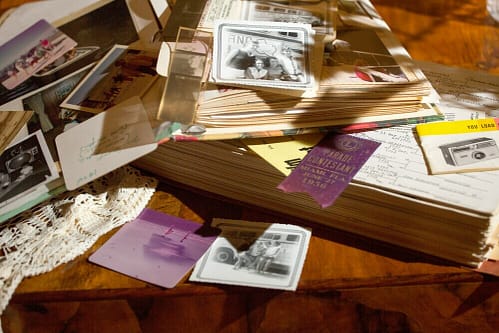
I think that mixing grief and photography is one of the most common ways we deal with memories of our loved ones. Actually, for any memories at all. Photography has become the go-to medium for capturing memories, especially in our digital age. There’s something truly remarkable about how commonplace cameras have become. Almost everyone has one on their phone, making photography probably one of the most accessible and popular art forms out there.
Some people may not think of snapping a photo with your phone as creating art, but that’s exactly what it is. You’re not only taking a picture but you’re also preserving a moment, an emotion, an experience that means something to you. And the best part? You can see the result right away. Talk about instant gratification at its finest.
Photography’s immediacy is a stark contrast to traditional art forms that often require more time and resources to produce. Take something like oil painting, for example. It takes forever to dry and if you have more than one layer, which you usually do, it’ll take even longer. And then after it dries, you have to varnish it and then wait for that to dry, too. A painter might spend weeks, months or even years completing a piece. But a photograph is created in a fraction of a second. It holds onto that fleeting moment and offers a way to revisit it again and again. Painting does, too. It just takes longer.
You might wonder why this matters, particularly when discussing grief. Photographs make certain that we don’t forget. They are tickets back to the past, letting us reconnect with those who are no longer with us. Snapshots can do so much more than just document a trip or celebration – they can be vital tools in exploring and expressing the complex emotions of grief.
Photography as a Medium for Emotional Exploration
So what are the ways photography can serve as an invaluable tool for emotional exploration, especially for those muddling around with grief? When words fall short, and emotions run high, it’s not uncommon to feel stuck. But guess what? The camera in your pocket can be more than just a tool for snapshots! It can be a means of uncovering and expressing the multitude of feelings that come with loss.
And what about the therapeutic potentials of photography? Capturing images can act as a cathartic activity just like a lot of art forms. It can help you to both acknowledge and release some of the complex emotions that you might be grappling with. Through the lens, grief transforms into a visual narrative, allowing you to deal with it at a pace that feels right for you.
Photos can also serve as emotional anchors. They enable you to freeze a moment in time that grasps the feelings of that instant. The result is that you’ve captured a record as well as the essence of your emotional state, which can serve as a milestone in your grief journey. By photographing objects, places, or even self-portraits, you’re essentially creating a map of your sorrow and healing.
Photography provides so many people with a creative outlet to construct an image for those feelings that might be hard to express verbally. Sometimes, you may encounter feelings that seem too vast or too deep to put into words. This is where imagery can help you. It gives shape to the abstract and provides a voice to the silent inner workings of grief.
Cherishing the Moments: Photography’s Role in Preserving Memories
That powerful aspect of photography that allows you to freeze a moment in time, serves as a lasting tribute to our experiences and relationships. Photography is more than just art, it’s a time capsule!
The loss of a loved one is one of those changes in life’s narrative that can’t be fixed, as much as we’d like to. It’s because of this that photographs become such profound symbols of remembrance. Each picture captures a fragment of a story, a smile, or a shared glance that keeps the memory of the loved one vivid and near in the only physical way possible. So, you honor not only the person you’ve lost but also acknowledge your journey of grief and healing.
Using photography to help with grief is about the person who is no longer with us. And it’s also about you – capturing elements that resonate with your inner state can be a form of honoring yourself, in this moment, with all the love and understanding you deserve. Whether it is a place you visited together, an object that holds significance, or just a simple scene that captures your current feelings, photography lets you keep these memories alive.
The benefits of photography extends beyond creating a scrapbook of past events. Photography can actively constructs our personal and family narratives. It has the power to evoke emotion and draw forth memories and this is super comforting to a lot of people. Just through one photo, you can feel things like laughter or the comfort of a hug even when that person is no longer here.
I’ve spent a lot of time talking about all of the advantages of photography and using it to honor your loved ones but I wanted to add that for some, photos do not always feel great. I say this because I have been one of those people. Truthfully, I have phases. Sometimes I’m okay with the memories enshrined in photos and other times I feel lonely and surrounded by ghosts. I have been told in therapy that this is normal and that it’s okay to feel what you feel. If you feel the same way, just know it’s okay and you’re not alone in your feelings.
Crafting a Visual Journey Through Grief: Make a Grief Photo Book
I think it’s kind of fascinating that a camera, something you likely carry with you every day, can become a therapeutic tool for documenting a grief journey. You don’t have to worry too much about being a professional photographer or anything either. It’s the story and the emotion behind the images that count.
If the idea of photography appeals to you, consider making a grief photo book or scrapbook. It can help you with preserving memories and at the same time, show the evolution of your emotions over time. You can intentionally select and arrange photographs to represent significant moments in your journey through grief.
You can honor your person by choosing images that reflect your connection to them, or you can focus solely on capturing elements that resonate with your current emotional state. It’s about creating something that’s both a tribute and a personal sanctuary. Like a grief art journal.
If you want to and that helps, just think of this photo book as a form of visual journaling. It doesn’t need to follow a chronological order. Instead, organize the images in a way that makes sense to you and your unique experience with grief.
Over time, this grief photo book will become a personal artifact that may reveal how your feelings and perspective have shifted. Looking back through this book, you can track your healing journey, witnessing the subtle and sometimes profound ways in which your grief has transformed.
For me, creative projects like this can be incredibly meditative and emotionally nourishing. It provides you with a way to actively engage with your grief, to validate it, and ultimately, to see how you’ve grown. Engaging with your grief story through the lens of a camera or whatever method you ultimately choose, helps you keep your memories vibrant, paying homage to your loved one while honoring your own resilience and capacity to love.






